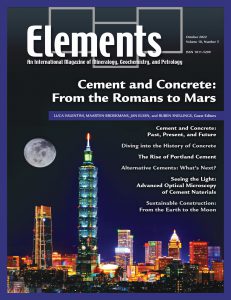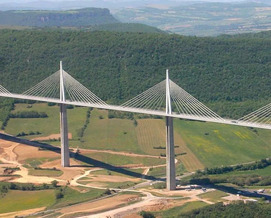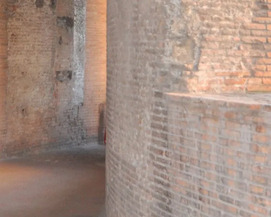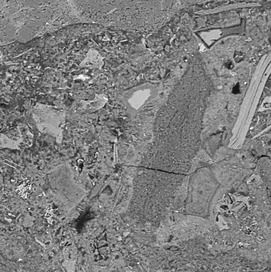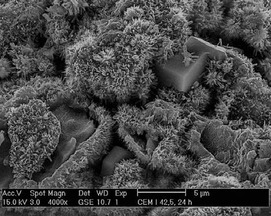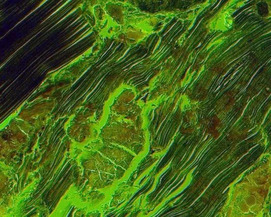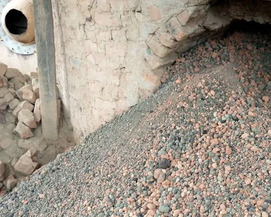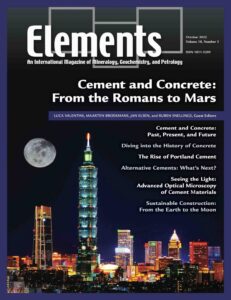Cement and Concrete: From the Romans to Mars
Luca Valentini, Maarten Broekmans, Jan Elsen, and Ruben Snellings – Guest Editors
Table of Contents
Portland cement represents an essential commodity in a developing and quickly urbanizing world. However, the downside of its popularity is a massive ecological footprint, in terms of global warming potential and consumption of mineral and water resources. Therefore, the development of sustainable alternatives to ordinary Portland cement constitutes a fundamental technological and societal challenge. In this context, mineralogy and geochemistry play an important role in assessing primary and secondary resources for a new generation of cement and concrete that has a reduced ecological footprint, drawing from the knowledge of both ancient and modern binders. Mineralogical and geochemical tools are also essential to establishing a link between the basic physical and chemical processes that occur during the production, hardening, service life, and degradation of concrete.
- Cement and Concrete—Past, Present, and Future
- Historic Concrete Science: Opus Caementicium to “Natural Cements”
- The Rise of Portland Cements
- Alternative Non-Portland Binders
- Polarization-fluorescence Microscopy in the Study of Aggregates and Concrete
- Sustainable Sourcing of Raw Materials for Construction: From the Earth to the Moon and Beyond
v18n6 Exploring Jupiter’s Moon Io
GUEST EDITORS: Anne Pommier (Carnegie Institution for Science, USA) and Alfred McEwen (University of Arizona, USA)
Jupiter’s moon Io is the best place to understand a fundamental planetary process that shaped terrestrial planets, icy ocean worlds, and extrasolar planets: tidal heating. Io is the most tidally heated world in our Solar System and may contain a magma ocean. Io’s spectacular volcanic plumes sustain the atmosphere and feed the giant magnetosphere of the Jovian system. The lavas covering its surface reflect heatpipe tectonics, which is analogous to the volcanically hyperactive youth of all rocky planets. Io is the ideal planet-scale laboratory to study the intertwined processes of tidal forcing, extreme volcanism, and atmosphere–magnetosphere interactions. This issue of Elements will review our knowledge of Io, emphasizing its composition, interior dynamics, and surface processes. We will also share perspectives for future missions.
- Io: A Unique World in Our Solar System Anne Pommier (Carnegie Institution for Science, USA) and Alfred McEwen (University of Arizona, USA)
- Tidal Heating in Io Isamu Matsuyama (University of Arizona, USA), Teresa Steinke (Delft University of Technology, The Netherlands), and Francis Nimmo (University of California Santa Cruz, USA)
- Io’s Volcanic Activity and Atmosphere Ashley G. Davies (Jet Propulsion Laboratory, USA) and Audrey Vorburger (University of Bern, Switzerland)
- The Internal Structure of Io Doris Breuer (DLR Institute of Planetary Research, Germany), Christopher Hamilton (University of Arizona, USA), and Krishan Khurana (UCLA, USA)
- The Cycles Driving Io’s Tectonics Laszlo P. Keszthelyi (USGS, USA), Windy Jaeger (USGS, USA), and Jani Radebaugh (Brigham Young University, USA)
- • Perspective: The Future Exploration of Io James T. Keane (Jet Propulsion Laboratory, USA), Katherine de Kleer (Caltech, USA), John Spencer (Southwest Research Institute, USA)
- Halogens: From Planetary Surfaces to Interiors (February 2022)
- Organic Biomarkers (April 2022)
- Water in Planetary Bodies (June 2022)
- Cascadia Subduction Zone (August 2022)
- Cement and Concrete: From the Romans to Mars (October 2022)
- Exploring Jupiter’s Moon Io (December 2022)
Thematic Articles
Editors' Corrigendum
We deeply regret that a typo was accidentally printed on this issue’s cover, in which “Materials” was spelled as “Naterials.” The online version has been corrected. We sincerely apologize for this unintentional oversight.



